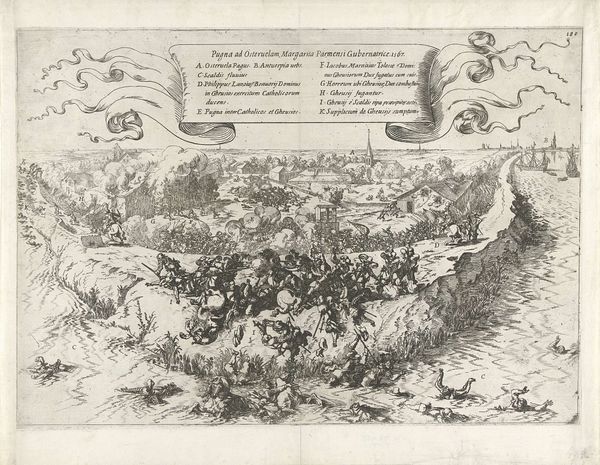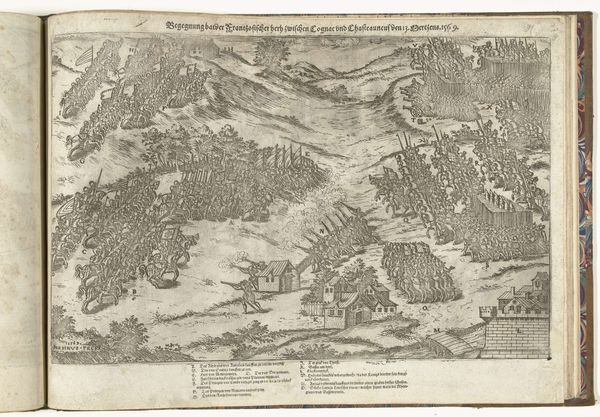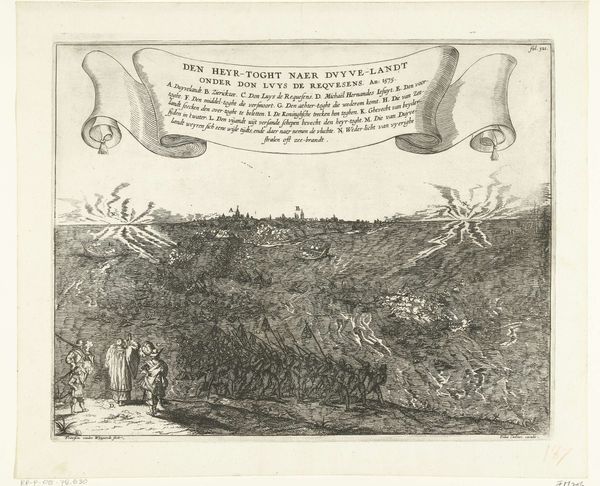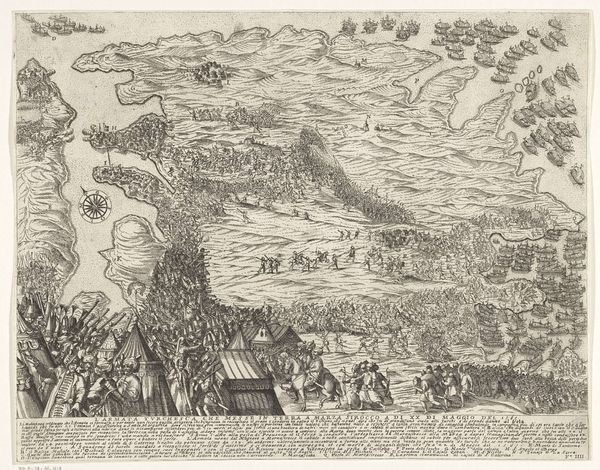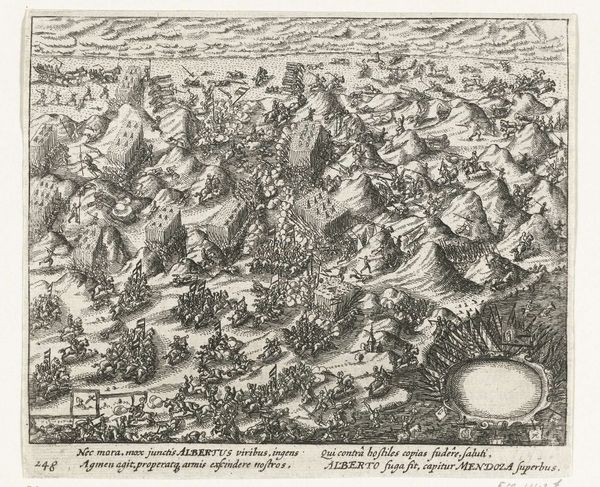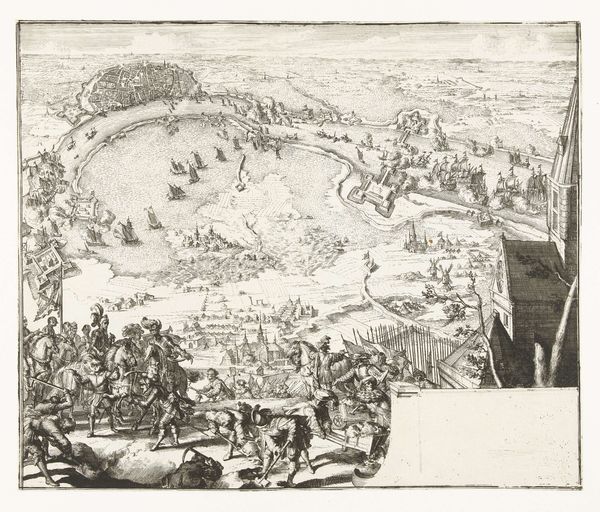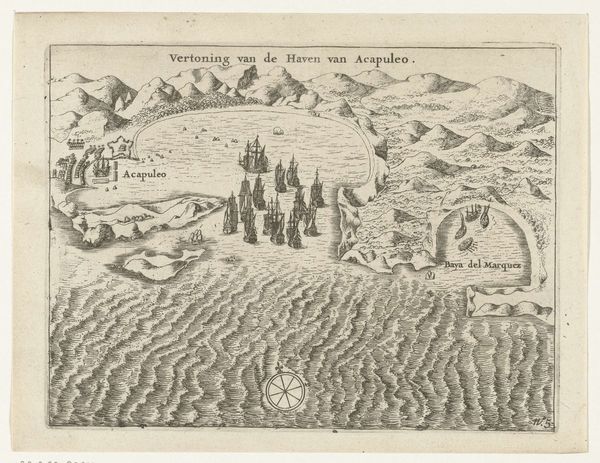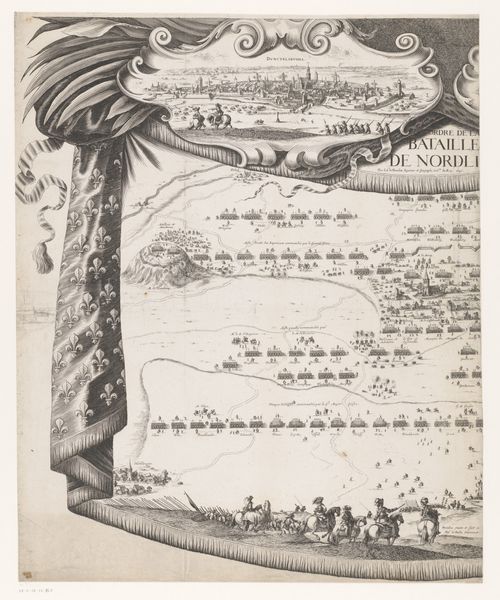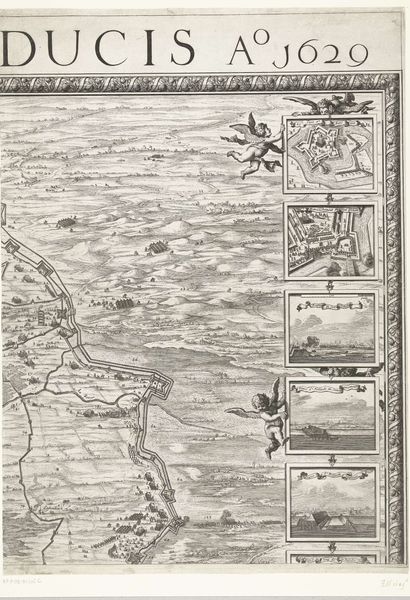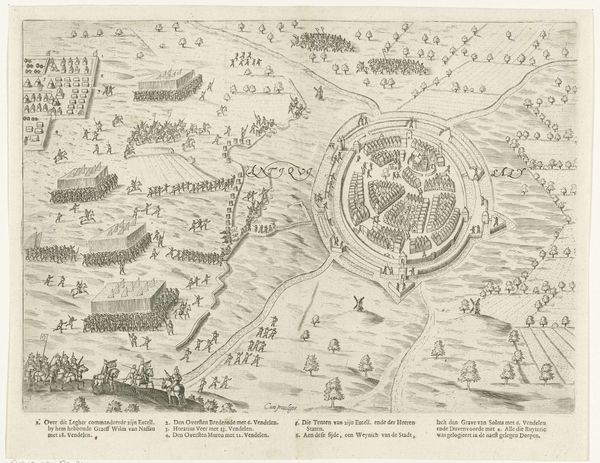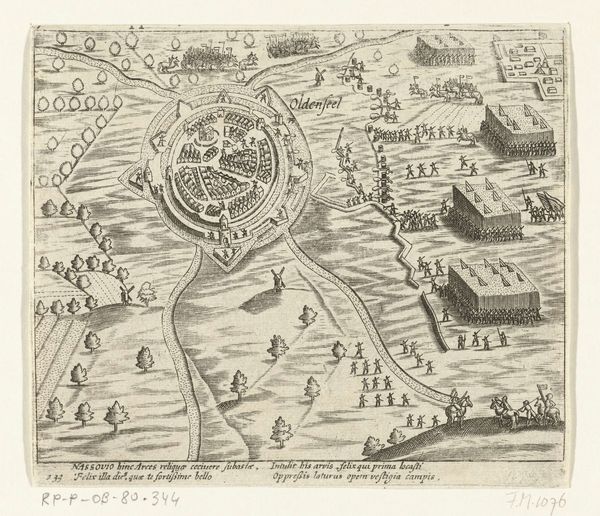
Nachtelijk tocht van Spaanse soldaten door het water naar Duiveland, 1575 1649 - 1651
0:00
0:00
print, etching, engraving
#
medieval
#
narrative-art
# print
#
etching
#
old engraving style
#
landscape
#
geometric
#
history-painting
#
engraving
Dimensions: height 220 mm, width 273 mm
Copyright: Rijks Museum: Open Domain
Curator: This is a fascinating print titled “Nachtelijk tocht van Spaanse soldaten door het water naar Duiveland, 1575,” made anonymously between 1649 and 1651. The Rijksmuseum is fortunate to have it in their collection. What are your first impressions? Editor: It's bleak, stark almost. The contrasting dark lines of the figures and water against the white sky. The etcher expertly captures a sense of struggle. There’s such potent linearity—those regimented lines create an oppressive, almost suffocating atmosphere. Curator: Indeed. From a historical perspective, the piece is important as a record. It depicts the Spanish army's night march through water towards Duiveland in 1575. An ambitious attempt during the Eighty Years’ War to capture Zeeland, that ultimately failed because of the floodings. Editor: Notice how the artist uses the technique of cross-hatching. These are not just lines but a series of intersections that render three-dimensionality. The play of light on the water's surface creates an illusion of depth and movement. Curator: It’s an excellent demonstration of how prints were used not just as art objects, but also as tools for propaganda. Prints circulated widely, helping shape public opinion. Images such as this one cemented national identities during times of conflict. You have soldiers wading determinedly through neck-high water toward a distant shore defended by boats; it presents them in a strong manner. Editor: Though technically impressive with its intricate lines, the emotional impact of this work is also significant. Look closely. Notice the figures seem almost mechanical, devoid of individuality. And even though, as you say, these soldiers wading give an impression of power, there's something tragic, foreboding to it all as well. Curator: It shows how social and political turmoil influenced artists of that time. In some ways, it is just one fragment extracted from a broader narrative canvas that tells us not just what was seen then but also how that was to be viewed, or understood, within specific socio-political circles! Editor: I find the formal arrangement compelling—how simple etched lines can embody chaos. Thanks for contextualizing this historical account and reminding us of art's reflective power. Curator: My pleasure. Looking at it through this artistic lens adds to understanding what it represents: The image helps people better contextualize it than words do!
Comments
No comments
Be the first to comment and join the conversation on the ultimate creative platform.

